BZ 300 Exam 3
1/79
There's no tags or description
Looks like no tags are added yet.
Name | Mastery | Learn | Test | Matching | Spaced |
|---|
No study sessions yet.
80 Terms
Panda Signal
means that evolution builds new traits by reusing old parts, instead of creating new ones from scratch — just like a panda using its wrist bone as a thumb.
Evolution is a tinkerer, not an engineer — it works with what’s available, adapting old structures for new functions.
signal
something that specifically evolved to carry certain info
ex. bird singing a mating song to attract a mate
cue
A piece of information that was not evolved to communicate, but another animal can still use it
it can lead to a signal being created by becoming more specific and modified if its usefyl for both receiver and sender
ex. smell of mouses urine to tell an owl where it has been
ex. bees dancing when finding food can cue other bees to know that there is food in a certain location, but bee does not mean to communicate that
sensory exploitation
when a signal evolves to take advantage of pre-existing sensory biases in the receiver.
Using another animal’s sensory bias to your advantage

sensory bias example
female fish are biased to being attracted to something orange because of food, so if a male happens to be orange, that male will attract more females so that orange male will leave behind offspring who are also orange and that’s how orange will evolve over time
this shows how a pre-existing bias can evolve into a signal
sensory bias as a neural constraint
how animals’ brains are already tuned to notice certain features, which can influence how signals evolve.
Example: Zebra Finches with Artificial Crests
, zebra finches (which don’t naturally have head crests) were given fake colored crests.
the female brain had a pre-existing bias for certain bright contrasts (like white on the head),
so even though the “white crest” was unnatural, it triggered a stronger attraction.
what is this saying about the origin of the traits?
the origin of the trait has no adaptive value
it’s simply because of sensory bias
then it evolves finally as a signal
Can sensory bias come from evolutionary past?
Yes—meaning animals can still respond to signals that their ancestors used, even if those signals no longer exist in the species today
Example of sensory bias from evolutionary past?
Swordtails have a long tail extension (“sword”) used in sexual signaling.
Platyfish don’t — but when researchers added an artificial sword to platyfish males, females still preferred them!
Even though platyfish lost the sword trait, their brains still carry the old sensory preference for it from their common ancestor.
Extra androgen hypothesis in hyena
higher levels of testosterone has evolved in females to have a bigger size
higher levels of testosterone in females lead to females having bigger cubs
psudeo penis in females develops as a byproduct of this extra testosterone which can be used for communication which is now a secondary signal for female hyenas
byproduct hypothesis
means a signal or trait can evolve as a side effect of another adaptive trait — not because the signal itself was directly favored by natural selection
honest signals
signals that reliably show the signaler’s actual condition or ability.
Otherwise, everyone would “fake” them, and communication would break down.
they need to have a cost!!
Handicap Principle
Any honest signal is a handicap due to their cost
Signals usually have costs to produce or maintain — only strong or healthy individuals can afford them.
cost is what prevents cheating
4 kinds of questions we can ask about the hyena psuedopenis
what are the mechanisms driving this? the hormones are the mechanism that are driving the bigger size
G by E questions— how much of the pseudopenis is driven by genes and environment?
comparative— are there other groups that have similar structure?
cost and benefit question— what are the pros and cons of this structure?
multimodal signaling
when an animal uses more than one type of signal (for example, visual and auditory) to communicate.
increases honesty
how does multimodal signaling promote honesty and increase reliability?
Increases reliability and efficiency (since if one signal fails, the other can still communicate the message).
Enforces honesty in signaling, because maintaining multiple costly traits prevents “cheating.”
Deceitful Signaling
when an organism sends a signal that mimics another signal to manipulate the receiver for its own benefit.
benefit sender, cost to receiver
Negative Frequency-Dependent Selection
The rarer a trait is, the more advantage it has.—— Maintains diversity

Positive frequency-dependent
makes the common signal stronger and more widespread because being typical is safer or more effective.
Promotes uniformity

Eavesdropping
when a signal meant for one receiver is overheard and exploited by another species (a non-intended receiver).
ex. Bats listening to frog mating calls
What kind of conflict does eavesdropping create?
a conflict between communication benefits and predation costs, driving the continuous adaptation of both sender and eavesdropper species.
Signal Tuning and Adaptation
how natural selection shapes animal signals (like bird songs) so they’re best suited to their environment and minimize risk while maximizing communication success.
signal tuning
the idea that communication signals adapt to the conditions where they’re used.
ex. mob and seet calls in birds— one is used to warn conspecifics about predator, the other is to get other conspecific to help you defend
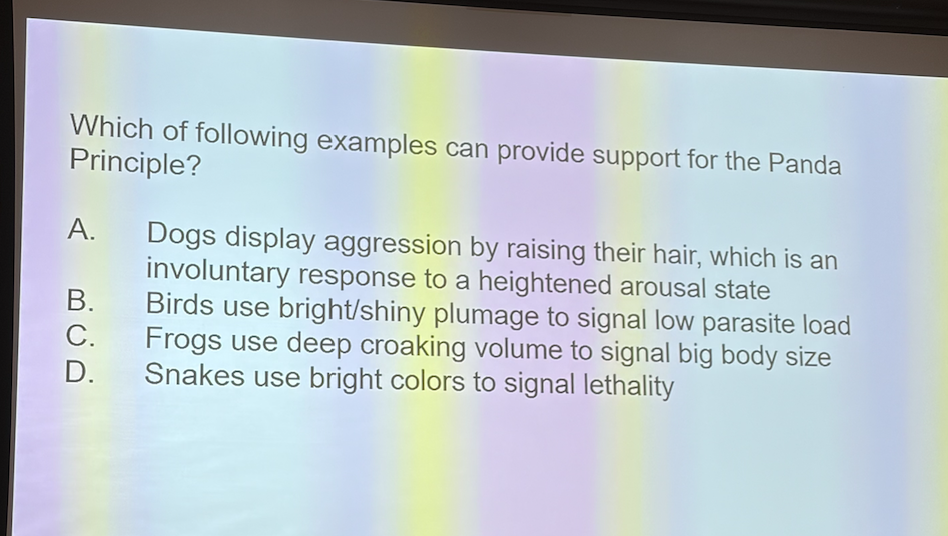
A— key: aroused state leads to a involuntary response which evolves into a signal so that when a dog sees another dog with raised hair, it interprets that as aggressive
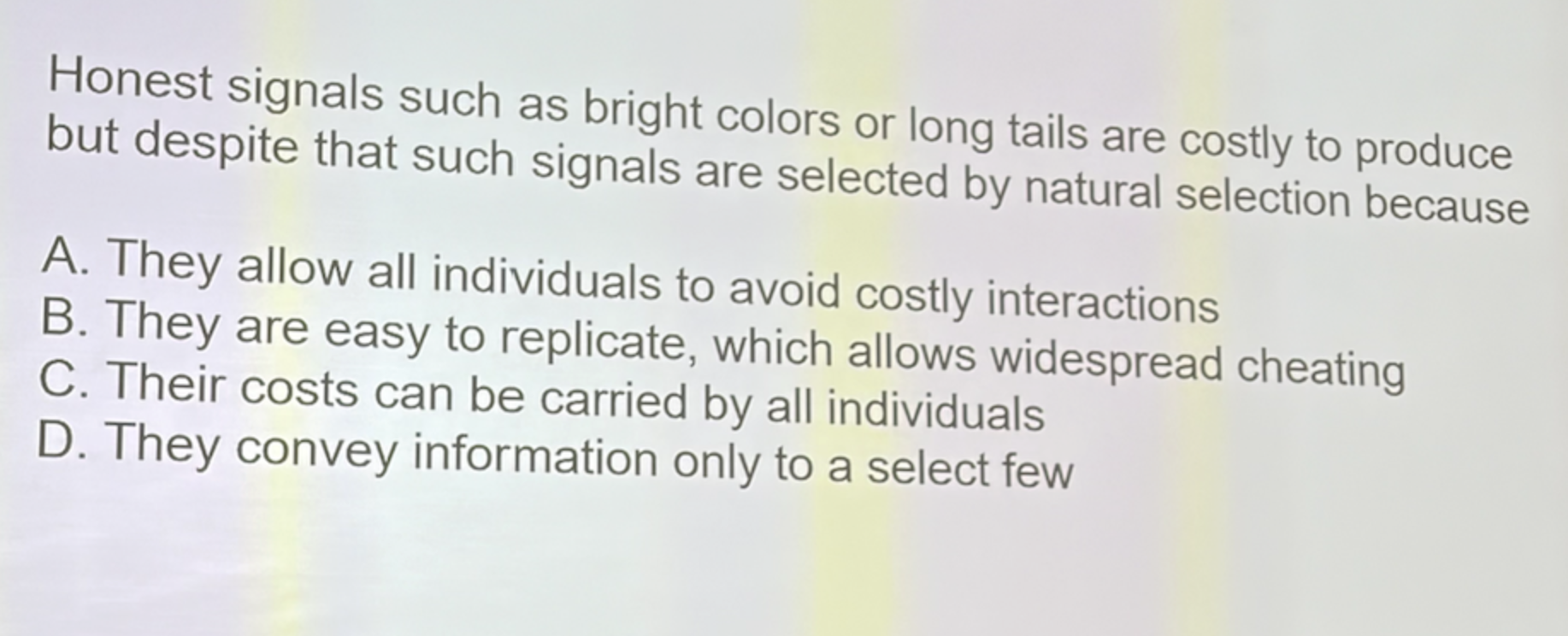
A— review honest signals; they can only be carried by individuals of high quality which is costly, but its purpose is to avoid costly interactions
What is the relationship between the cost and benefit of honesty and the quality of the individual
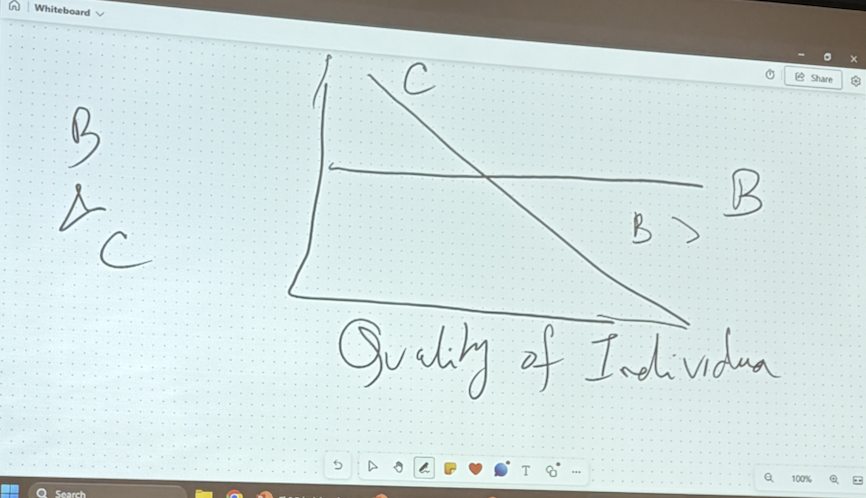
Sexual Selection
how natural selection acts on males vs females
common pattern
males— more eager to find mates and compete for mates
females— more picky on who they mate with
but it can be exactly the opposite in some species
Sexual Dimorphism
males and females look different because of sexual selection — one sex competes, the other chooses.
can be driven by social competition or Bateman’s gradient
Males often compete for mates → evolve traits like strength, size, color, or songs.
Females usually choose mates → evolve to be choosier or more camouflaged.
Female Choice (Intersexual selection)
One sex (usually females) chooses which individuals of the other sex to mate with.
Females select males with the most attractive or high-quality traits (e.g., bright feathers, complex songs, courtship displays).
Male–Male Competition (Intrasexual selection)
Members of the same sex compete with each other for access to mates.
Usually: Males compete with each other (physically or through displays) for access to females.
Results:
Traits like weapons, strength, large size, or aggression evolve.
Leads to dominance hierarchies and male–male competition.
how does reproductive behavior relate to signals?
reproductive behavior and signaling are deeply connected because signals are the tools animals use to coordinate, attract, and assess mates during reproduction.
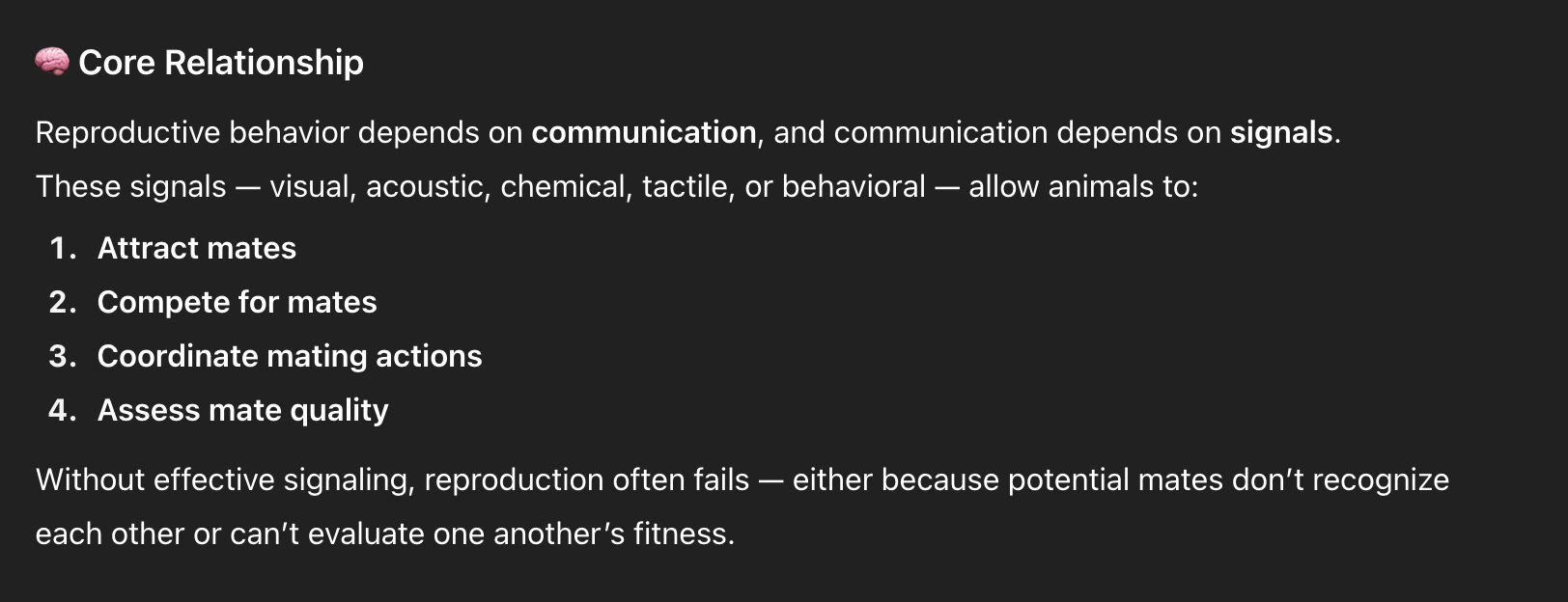
Anisogamy
The difference in size and cost between male and female gametes.
Males produce many small, cheap sperm.
Females produce fewer large, energy-expensive eggs.
Bateman’s Principle/Gradient
this principle describes how reproductive success differs between the sexes. it describes how reproductive success changes with the number of mates an individual has.
Males: Reproductive success increases rapidly with more mates.
Females: Reproductive success levels off after one or a few mates (because they’re limited by egg production, not mating opportunities).
How does Bateman’s Principle/Gradient effect variance in males and females?
males have higher variance in reproductive success — a few males father many offspring, while others get none.
Females have lower variance — most reproduce, but with fewer partners.
These two forces create the fundamental asymmetry between sexes — the root cause of most sex differences in reproductive behavior and signaling.
male-biased operational sex ratio (OSR)
more males competing for fewer receptive females because females are caring for young
What leads to sex role reversal and
If males invest more (for example, by guarding eggs or providing food gifts), then:
Males become the choosy sex.
Females compete for access to those investing males.
➡ This leads to sex role reversal and a female-biased operational sex ratio.
Operational Sex Ratio (OSR) =
The ratio of sexually active males to sexually receptive females at a given time.
It’s not just how many males and females exist —
it’s how many are ready and available to mate right now.this is the primary driver of differences in mating
dispersion of resources is an ecological factor— if males can monopolize resources, then they can mate
female-biased OSR
when there are more available females than males at any moment.
What determines OSR
investment of males vs females in mating and young
could be driven by G x E inetraction
conditional mating tactics
different behaviors that males switch between based on their size, strength, or environment.

the small beetle is just making the best of a bad situation
behavioral polyphenisms
when one species shows multiple behaviors depending on conditions.
ESS
evolutionary stable strategy
it’s a behavioral strategy that, once most of the population uses it, can’t be beaten by any alternative strategy.
alternative strategy vs conditional tactics
alt strategy: Behavior differences are genetically based — fixed for life
Inflexible — controlled by genetic polymorphism
Individuals are “born” into one strategy type and can’t switch.
conditional tactics: Behavior changes depending on the individual’s condition or environment.
Flexible — not genetically fixed.
A single individual could switch tactics if its situation changes.
“Conditional = can change; Alternative = always.”
Sperm competition
AFTER MATING
happens when the sperm from two or more males compete to fertilize the same female’s eggs.
It’s a form of sexual selection that happens after mating — not during courtship or fighting, but inside the female’s reproductive tract.
How do males compete in sperm competition
certain males produce more sperm
faster/better sperm
removal or sperm block
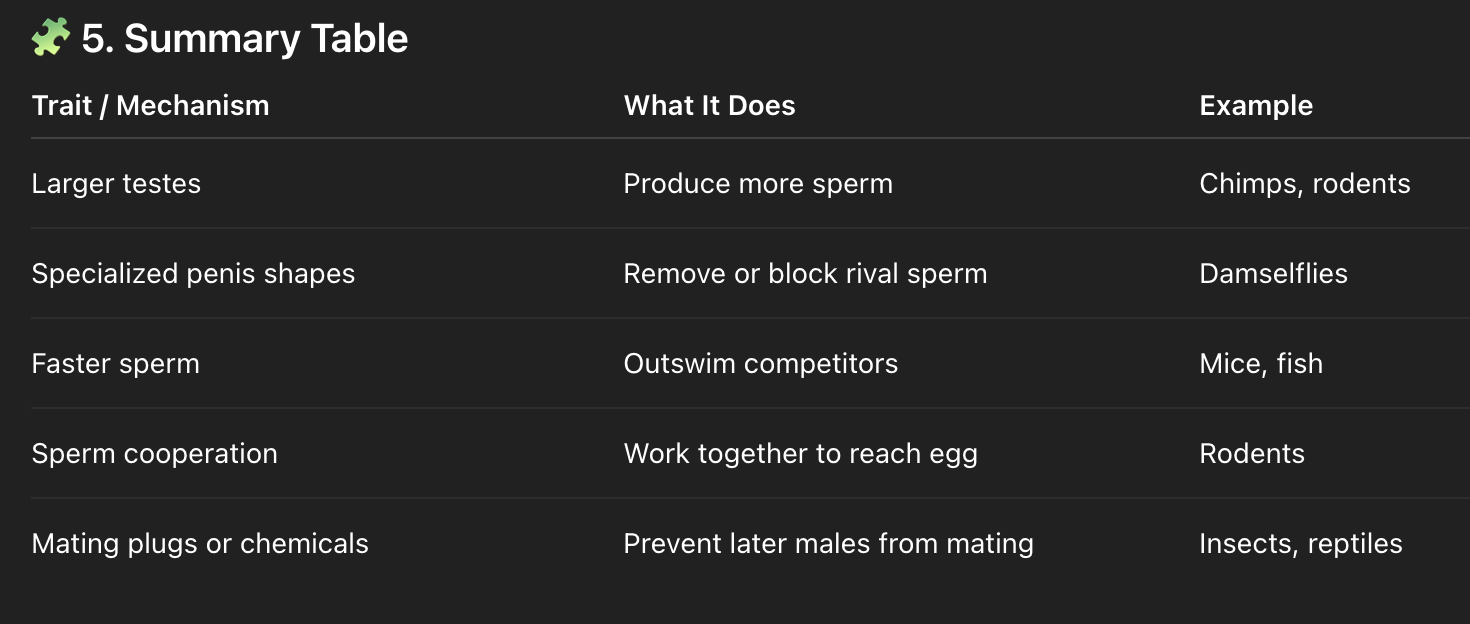
mate-guarding behaviors
After mating, males want to ensure paternity — that the offspring the female produces are theirs so they develop methods to ensure their own sperm binds with the females egg
mate guarding example
Mating plugs: males leave a physical plug in the female’s genital opening (common in insects and reptiles).
Chemical repellents: males release substances that make females unattractive to others.
Postcopulatory clasping: males physically hold females after mating (like damselflies in the picture)
“Guard now, gain paternity later.”
females choosing direct vs indirect benefits
direct— female chooses male for personal gain
indirect— The female doesn’t get a direct reward but her offspring inherit good genes or desirable traits.
“Good Genes” Hypothesis
Females choose males with traits that signal genetic quality, so their offspring will inherit those good genes (and be healthier, stronger, or more attractive)
Hamilton–Zuk Hypothesis (Parasite Resistance)
females can choose males based on immune competence
if a male can indicate its higher immune competence by some signal, than females should choose to mate with them
immune systems are very costly, so if you’re able to express a bright feather while also expressing high immune competence, you must be a good mate
Cryptic female choice
when a female influences which male’s sperm actually fertilizes her eggs after mating.
So even after mating with multiple males, the female still has some control over paternity — often without males knowing.
how does Cryptic female choice work?
Females can manipulate sperm use in different ways — examples include:
Sperm storage: keeping sperm from one male longer than others.
Sperm ejection: physically ejecting or dumping sperm from a less preferred male.
Chemical selection: her reproductive tract may favor sperm from genetically compatible or attractive males.
First or last male precedence: deciding whether the first or last male’s sperm gets used.
Biased resource investment: putting more resources into offspring from a preferred male.
Runaway selection
happens when females develop a preference for a male trait — and over generations, both the trait and the preference become genetically linked and reinforce each other.
Genetic Polymorphism
different genes→ different inherited traits that are fixed
Behavioral Polymorphism
subset of genetic polymorphism
Different genes→ different inherited behavioral differences
Behavioral Polyphenism
Same genes→ different behavior based off of conditional tactics that can shape them in utero, larval or juvenile stages
flexible
Chase-away selection
type of intersexual selection (mate choice) —
but unlike runaway selection, it’s conflict-based, not cooperative
Males evolve traits that trick or exploit females’ preferences, even if it hurts the females — and then females evolve resistance to those tricks
what are some ways that females influence male reproduction?

what are some ways that males influence female reproduction?

Why did monogamy evolve?
one male to one female for life (rare)
mate limitation
mate guarding (f is guarding her m from mating with others)
mate cooperation (both parents are needed to raise young)
social monogamy
BIRDS
Social monogamy means a male and female form a long-term social pair bond —
they live together, share a territory, and often cooperate in raising offspring.
BUT — it doesn’t necessarily mean they only mate with each other!
why are birds classic example of (social) monogamy?
chicks are very demanding so biparental care is very important for survival of chicks
important for male to assist the female
all about costs and benefits
Mate limitation hypothesis
Is paternal care a cause or consequence of monogamy?
we’ve been focusing on the importance of paternal care is a cause of monogamy
but is it a consequence????
Monogamy evolves when potential mates are hard to find or far apart,
so it’s better to stay with one partner than waste time searching for others.so this hypothesis states that mate limitation is the primary cause of monogamy
Why did polyandry evolve?
*One f mates with multiple males*
territory scarcity and male cooperation
if there’s limited territory, males may have to defend same areas and share one female and help raise the one female’s young together
sex role reversal
females defend territory while males take care of young so females may need to mate with multiple males to ensure all of their young is taken care of
Polygny
When a single m has multiple f partners
Good genes hyoothesis
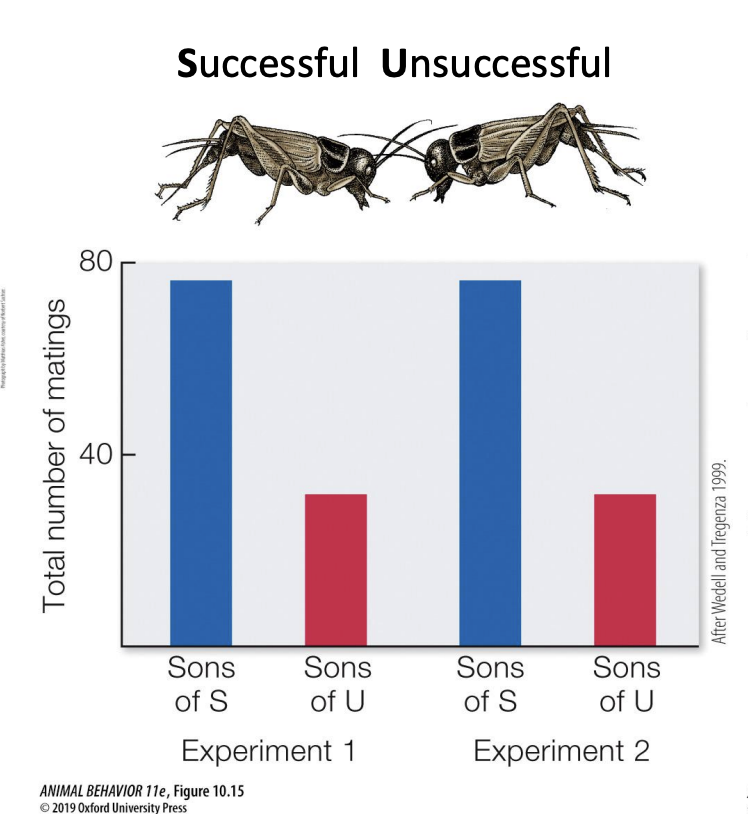
sons of successful mate more, so the good genes get passed on more than the unsuccessful (bad genes)
Genetic capatibility hypothesis
Genetic diversity hypothesis
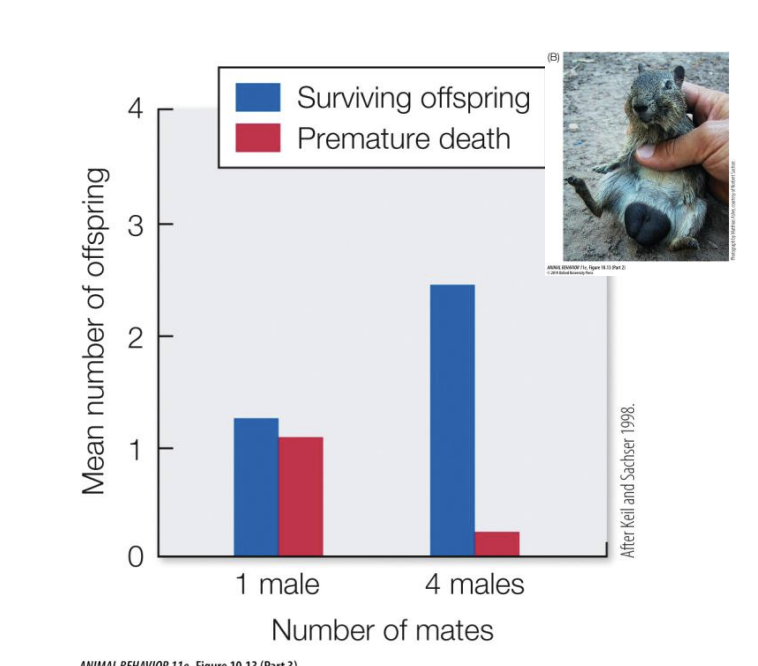
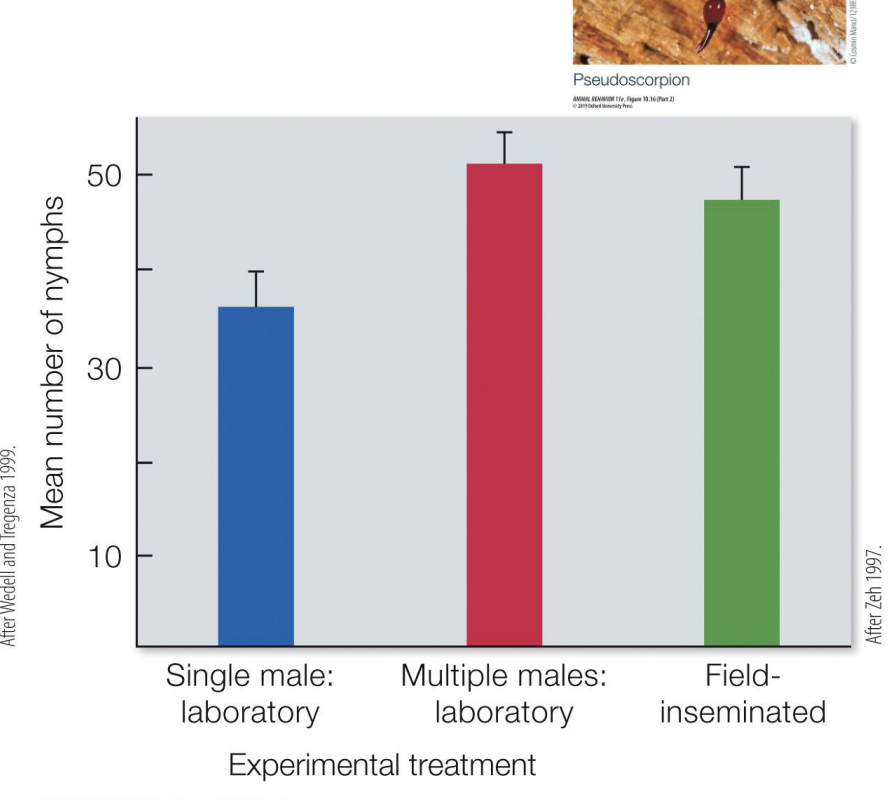
supports the genetic diversity hypothesis
Inbreeding avoidance hypothesis
polygyny
when a single f has multiple m partners